Snake Bite vs Spider Bite: Symptoms & Treatment
Animal & Bug Bites
•
Apr 8, 2024
Reviewed by:
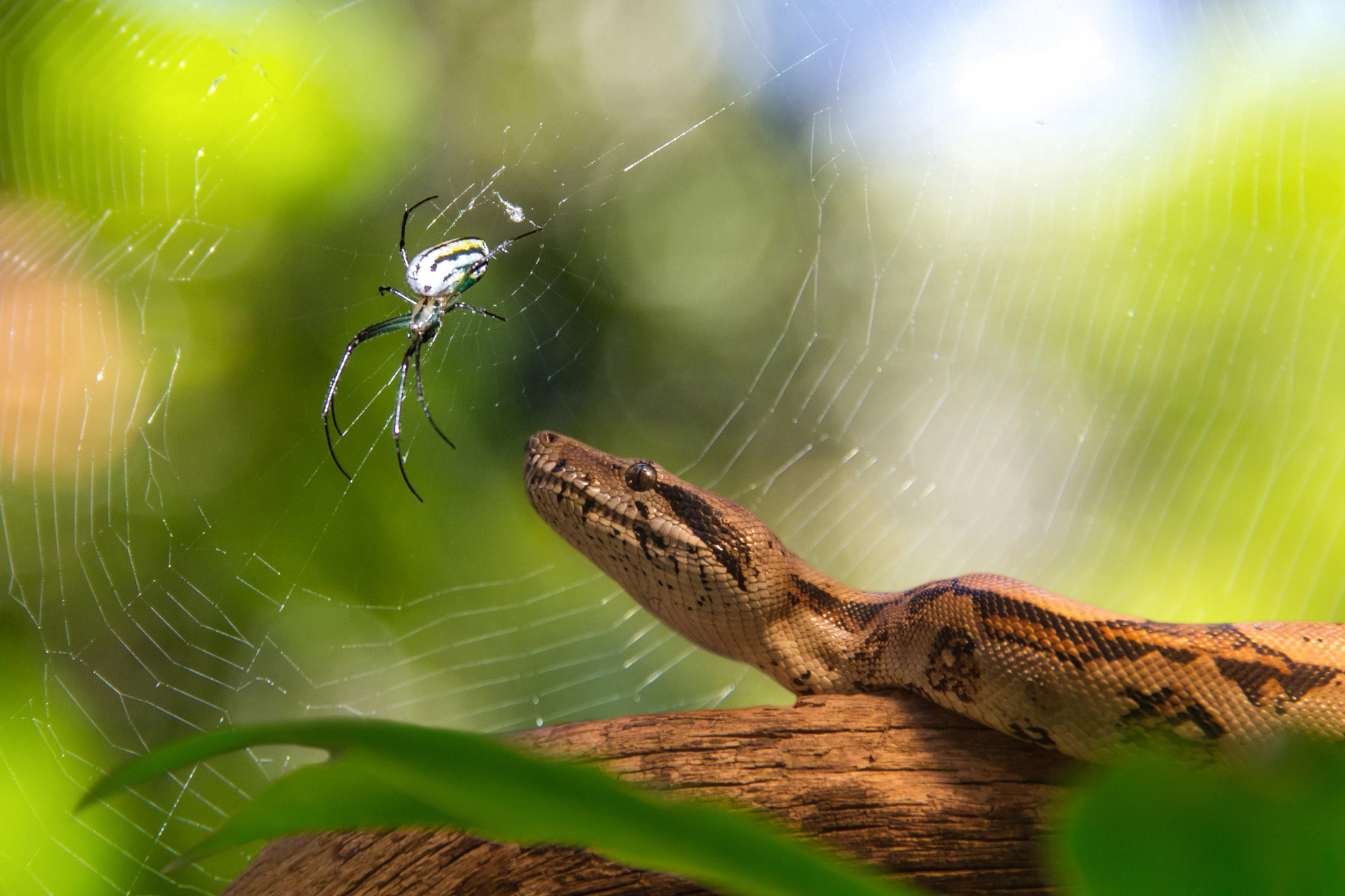
When you’re in the wild or working in the garden, bites and stings are often a fact of life as insects, arachnids, and reptiles call the great outdoors their home. While some bites can be harmless, not all are created equal. Snake and spider bites in particular can have significant consequences depending on whether or not they are venomous — and it’s not always easy to tell the difference.
Whether you’re an outdoor hobby enthusiast or have a passion for gardening, it’s important to understand the difference between a snake bite vs spider bite, their symptoms, and treatment options. Knowing how to distinguish between the signs of snake bites and spider bites and when to seek medical help could mean the difference between life and death.
What to do if you are bitten by a spider or snake
Here is what to do if you are bitten by a spider:
- Try your best to remain calm
- Call 911 or head to your nearest ER
- Wash the bite gently using mild soap and water
- Apply an ice pack to help reduce pain and swelling
- Elevate the bite area higher than the heart if it’s on a limb
- Avoid taking any medications before seeking medical help
Here is what to do if you get bit by a snake:
- Try your best to remain calm
- Call 911 or head to your nearest ER
- Lay or sit on the ground so that the wound is below the level of your heart
- Remove all jewelry, watches, or bracelets in case the arms or legs begin to swell
- Cover with a clean bandage or cloth
Whatever you do, DO NOT:
- Try to suck snake venom out of a bite
- Make cuts over the snake bite
- Wash the wound site
- Apply a cold compress to the bitten area
- Eat, drink, or take any medications
How to identify venomous snakes and spiders
Before we dive into the snake bite vs spider bite symptoms and treatment options, it’s crucial that you are able to identify a venomous critter from a harmless one to know when medical attention might be necessary. Because we have ER locations all over Texas and in Colorado Springs, we will be identifying the species native to those areas to look out for.
Pit Vipers
In Texas, there are three common venomous snakes known as Pit Vipers: Rattlesnakes, Copperheads, and Cottonmouths.
- Rattlesnakes come in a variety of earthy hues but are most recognizable by having a rattle at the end of their tails. Rattlesnake venom is made up of hemotoxic elements which can cause organ failure and even death if not treated promptly, making them one of the most dangerous snakes you can encounter. They can often be found in forests, swamps, or grassy areas. Even if you don’t see a rattlesnake, you will be able to hear its distinctive rattling warning you to stay away. While these are common in Texas, they are also common in Colorado.
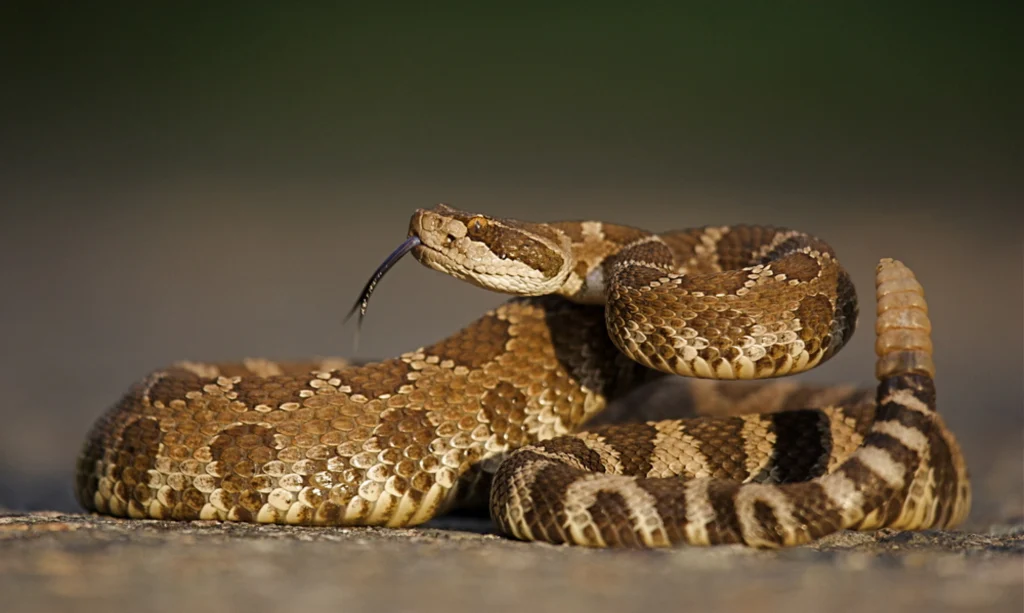
- Copperheads can be identified by their copper or reddish-brown crossbands on a lighter-colored body. Copperhead bites are not life-threatening but can be very painful and do require medical attention. They like to reside in rocky areas or aquatic habitats such as swamps or rivers.
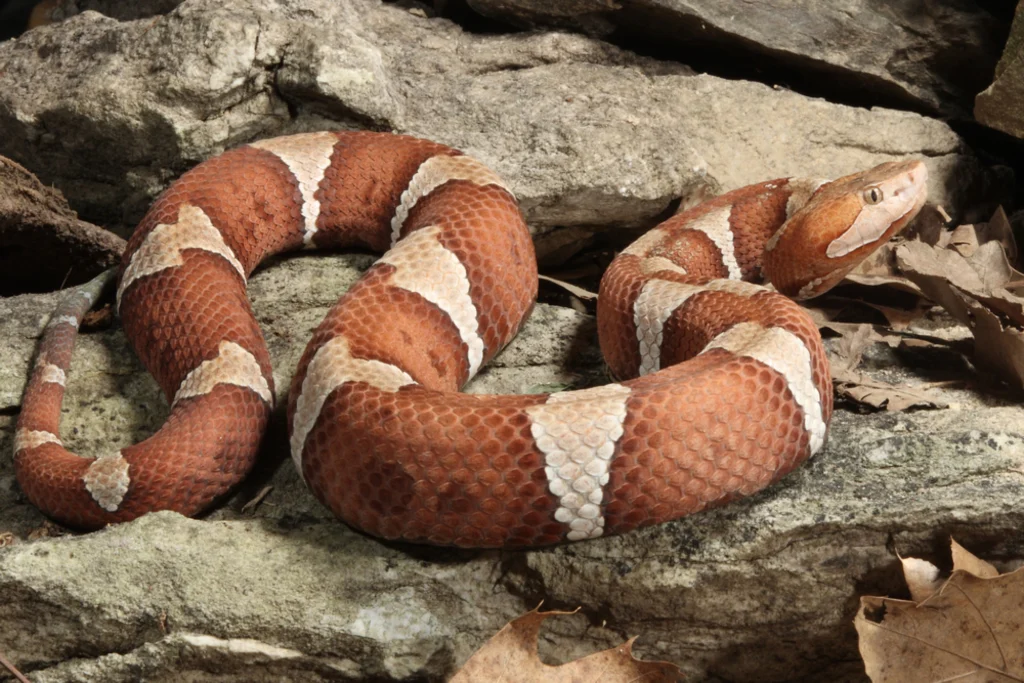
- Cottonmouths, also known as water moccasins, get their name from the white tissue inside their mouths. Their bites typically result in an inflammation of the bitten area accompanied by pain. As the nickname “water moccasin” suggests, cottonmouths can be found mostly in swamps and sluggish waterways, coastal marshes, rivers, ponds, and streams, making Texas their perfect playground.
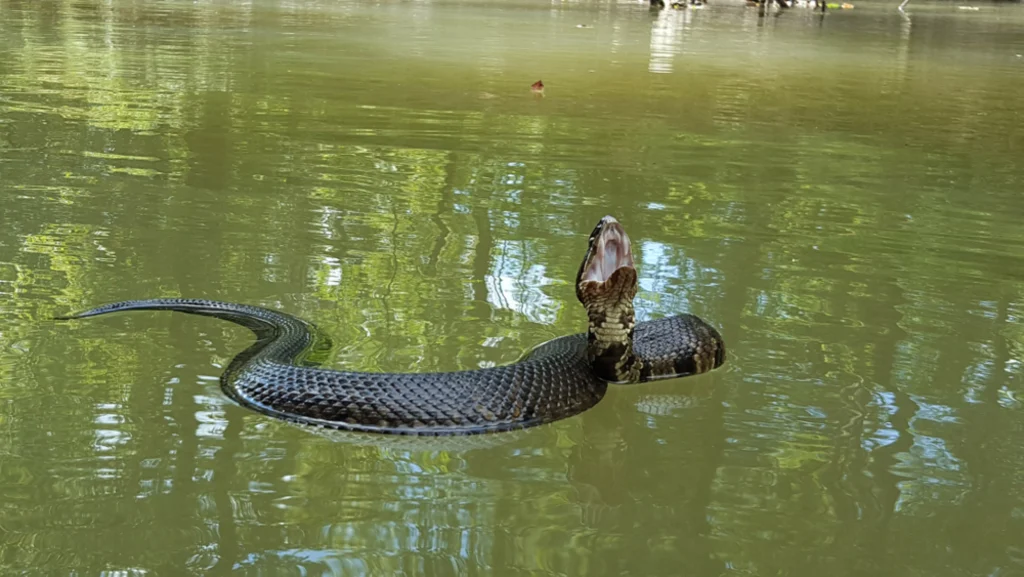
Black Widow spider
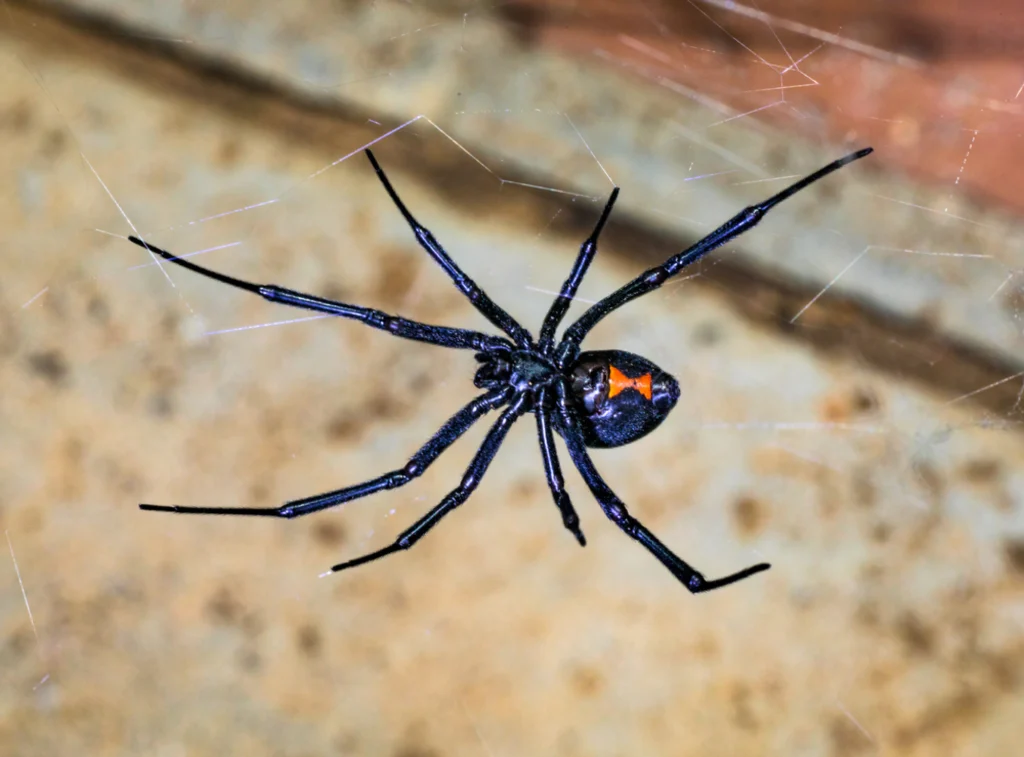
Black Widow female spiders are the ones to look out for as they are far more dangerous than their male counterparts. They are recognizable by their black, round bodies and red hourglass shape on the abdomen. Black widow bites contain neurotoxic venom that blocks nerve impulses to the muscles, causing cramps and disruptions to many of the body’s functions. Their bite can be fatal, but it is rare.
Black Widow spiders are native to North America and can be found in almost every state, including Texas. They are most commonly found outdoors in undisturbed areas but do like to hide in boxes, outdoor toilets, and sheds.
Brown Recluse spider
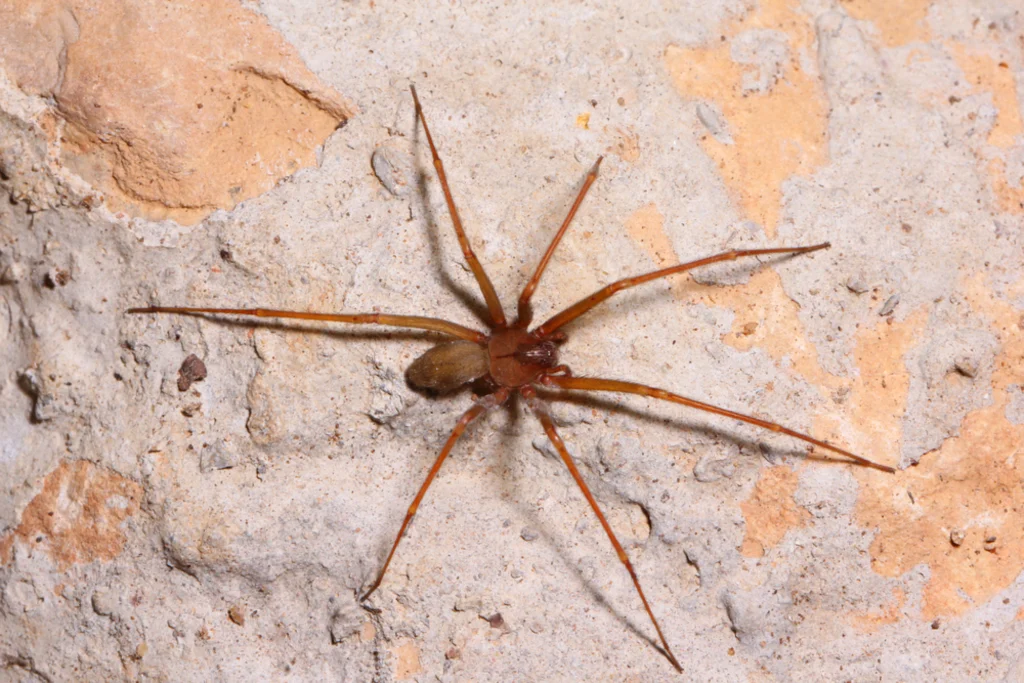
Brown Recluses are known for their golden brown color and are most recognizable by the violin-shaped mark on their backs. Unlike most spiders, Brown Recluses have six eyes in three pairs.
Brown Recluse bites are known to be painless and can often go unnoticed. Within a few hours, the bite’s symptoms will begin to develop. Because they contain necrotic venom, these bites can result in tissue damage.
Luckily for our Colorado friends, Brown Recluses are not native to this area and may not be a threat — Texans, however, are out of luck. These spiders like to live in dark, cool places and tend to make their homes in basements and garages of houses or other crawl spaces where they won’t be disturbed.
Snake bite vs spider bite symptoms
While venomous snake and spider bites are rare, you should still be prepared to identify them and know when to seek medical treatment.
How would I know if I was bitten by a snake?
Symptoms of a snake bite may vary depending on the type of snake, but common indicators include:
- Sudden, sharp pain at the site of the bite where you will likely see two larger puncture wounds.
- Swelling, redness, and bruising around the bite area. This will likely spread outward as time goes on.
- Bleeding and blistering around the bite.
How do you tell if a bite is from a spider?
Identifying a spider bite can be challenging since they can look similar to other insect bites or even a snake bite. However, certain signs can help distinguish a spider bite:
- Two smaller puncture wounds
- Pain, redness, and swelling that develop over time
- An ulcer or blister begins to develop (which is characteristic of some venomous spider bites, such as those from a brown recluse spider)
While these signs of a spider bite may seem close to a snake bite, they are not the same. The largest difference between a snake bite vs spider bite is that a snake bite will be noticed and painful right away upon impact whereas a spider bite may go unnoticed and the pain will develop over time. Spider bites often won’t bleed as the puncture wounds are so small.
However, these are just the symptoms of a regular snake and spider bite. Being bitten by a venomous snake or spider is a very different experience. Let’s get into it.
When to go to the ER for a snake bite vs spider bite
In our expert opinion, any snake or spider bite, regardless of whether they are venomous or not, should be seen by a medical professional as a precaution. There could be a chance that you are allergic to their bites and may not realize it until there is an emergency. But as we mentioned earlier, being bitten by a venomous snake or spider will look and feel different than an ordinary bite. Here is how to tell if your snake bite vs spider bite symptoms are serious and worth seeking emergency care.
When should you go to the ER for a spider bite?
How do I know if a spider bite is serious? If you are bitten by a Brown Recluse or a Black Widow spider, the bite and the symptoms will be far more severe. Here is a breakdown of these bite’s appearances and their symptoms so that you will know when to head to the emergency room for treatment.
| Appearance | Severe Symptoms | |
| Black Widow | • Skin will be red and itchy like a rash • Visible tissue damage (lesion) at the site of the bite | • Abdominal cramping • Nausea or vomiting • Sweating • Convulsions • Tremors • High blood pressure • Unconsciousness |
| Brown Recluse | • Bite will look like a bullseye with a pale center, red ring, and a bluish-purple ring • A severely itchy blister will form on the skin • An open ulcer will form with clear tissue breakdown at the site of the bite (necrosis) | • Chills • Body aches and muscle pain • Fever • Nausea • Restlessness • Weakness • Visible damage to the skin’s soft tissue that continues to grow |
Venomous spider bites can have severe or fatal consequences if not treated promptly. When in doubt, seek medical attention the minute you notice a spider bite that looks out of the ordinary. If a child or an elderly individual is bitten by a spider, the consequences may be even more dire, so be sure to get them the help they need as soon as possible.
When should you go to the ER for a snake bite?
Snake bites for the most part will look the same across the board, however, venomous snake bites will leave larger puncture wounds. A normal snake bite will often just invoke pain, but a venomous bite will be accompanied by much more severe symptoms that require emergency medical attention:
- Blurred vision
- Convulsions
- Dizziness and fainting
- Excessive sweating
- Fever
- Excessive salivation and thirst
- Severe pain or burning
- Muscle contractions
- Loss of muscle control
- Nausea and vomiting
- Numbness and tingling at the site of the bite
- Rapid or increased pulse
- Skin discoloration
- Visible tissue damage at the site of the bite
- Overall weakness
Because snake bites can result in medical complications if not treated promptly, make it your priority to seek help as soon as you are bitten by a snake.
Treatment options for a snake bite vs spider bite
How do you treat a snake bite and a spider bite? Although the treatment plan will depend on the severity of the symptoms accompanying the bite, treatment for a spider bite and a snake bite are pretty similar. When you arrive at the emergency room, the doctor will take your vitals and assess your symptoms to determine a diagnosis. The administration of antivenom, a tetanus shot, stabilizing the patient, wound care, and pain management are routine treatment options.
Antivenom, however, is usually not administered for Brown Recluse spider bites as long-term complications typically affect the skin. The healing process will take a lot longer than a Black Widow bite and may involve a dermatologist to help remove or repair the tissue damage.
Bitten by a snake or a spider? Head to Complete Care for emergency treatment.
Whether you’re planning an outdoor getaway or a garden makeover, be on the lookout for creepy, crawly critters! Although bites and stings are common occurrences in the springtime, it’s important to understand when your snake or spider bite is serious. Knowing the differences between a snake bite vs spider bite could be life-saving.
As one of our spring outdoor safety tips, if you are heading to your garage or shed to get your gardening gear, check for any spiders or snakes before touching any equipment to avoid a potential interaction.
Complete Care is a 24/7 freestanding emergency room that caters to both pediatric and adult patients and can provide the necessary treatment for snake and spider bites. Once you notice a bite, do not hesitate to visit any of our emergency facilities for help. With multiple locations in Texas (Austin, Corpus Christi, Dallas/Fort Worth, East Texas, Lubbock, and San Antonio) and in Colorado Springs, you should also know where to go when you need quality, award-winning emergency care.
More Helpful Articles by Complete Care:
- When is a Head Injury an Emergency?
- When to Go to the ER for Kidney Stones
- Healthy Heart Tips for Preventing Heart Disease
- What Sport Has the Most Injuries?
- Sprained Foot vs Broken Foot: How to Tell the Difference
